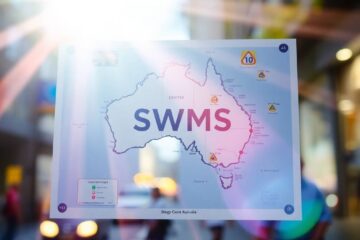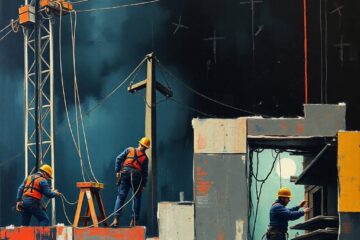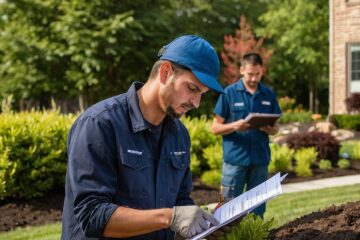
Unfortunately there is a lot of misinformation about the safety requirements for businesses in all industries. Let’s check out some of the main myths in the construction industry and what the actual truth is!
Contents HideI only need a safe work method statement if I’m doing work over $100,000
MYTH!
The truth is that safe work method statements (SWMS) are required for all high risk construction activities. So no matter whether the job is worth $30 or $3,000,000 if you are doing high risk construction work you need to have a SWMS written for that work. And it has to be available for anyone who needs to read it.
I am a builder and all the people on my site are sub contractors so it’s not my responsibility to ensure they have the right safety documents
MYTH!
If you are a Principal Contractor or are in charge of a site you have obligations under the WHS legislation. These obligations include making sure that contractors have the right licences, have SWMS if they are required, and that everyone on site and others around the site are safe from harm.
I only have to make sure that my site or work area is safe
MYTH!
In the legislation it particularly identifies that as a business you must ensure the safety of not only your workers, but anyone who may be affected by the work you do. For instance you must make sure that your deliveries can’t injure a passer by, or that dust doesn’t impact on a neighbour as much as you make sure it doesn’t harm your workers.
Only large businesses need WHS
MYTH!
Every Australian business has obligations under Workplace Health and Safety legislation. Some businesses have additional requirements such as particular licensing or documents, commonly in the construction industry. Often the legislation will tell you exactly what documents you need, for example when you need a SWMS or a WHS management plan. But other times, the legislation can be subjective and confusing.
The fact is all businesses must be able to provide evidence that they are managing their safety obligations, but it is often up to them how they do so. Safety manuals and WHS management plans (even for those who have not been told they must have them in the legislation) have become the easiest way for business owners to be able to show they have communicated expectations to employees and have processes in place to keep a safe work site.
An inspector won’t fine me or shut me down on my first offense
MYTH!
Often inspectors have discretionary powers to decide what happens if they identify an issue within a workplace. If they believe a person needs advice and are doing their best, they may believe it’s appropriate to give them 24 hours to produce their documents, but they don’t have to do so.
If you don’t have the correct documents or if they inspector believes your site is unsafe then not only can they fine you, they can also shut down your worksite. Another thing to consider is that if your site is shut down you can’t just start again when you have your documents. You need to wait until you get the okay from the inspector. This could take several days as they are also managing other incidents and non-compliance issues.
My insurance will pay if something goes wrong
MYTH!
Sorry to be the bearer of bad news, but your insurance company won’t pay your fines, or your legal costs if you are charged under WHS legislation. In the event of an incident occurring, fines can amount to hundreds of thousands of dollars, and you could be personally liable even if your business is run as a company. And you will have to pay a lawyer out of your own pocket to defend you and your company. In most instances insurance only pays if a worker or other person, makes a common law claim or liability claim against you, because they were injured on your work site. And don’t forget, if you don’t have the required documents required by law they could dispute your claim!


